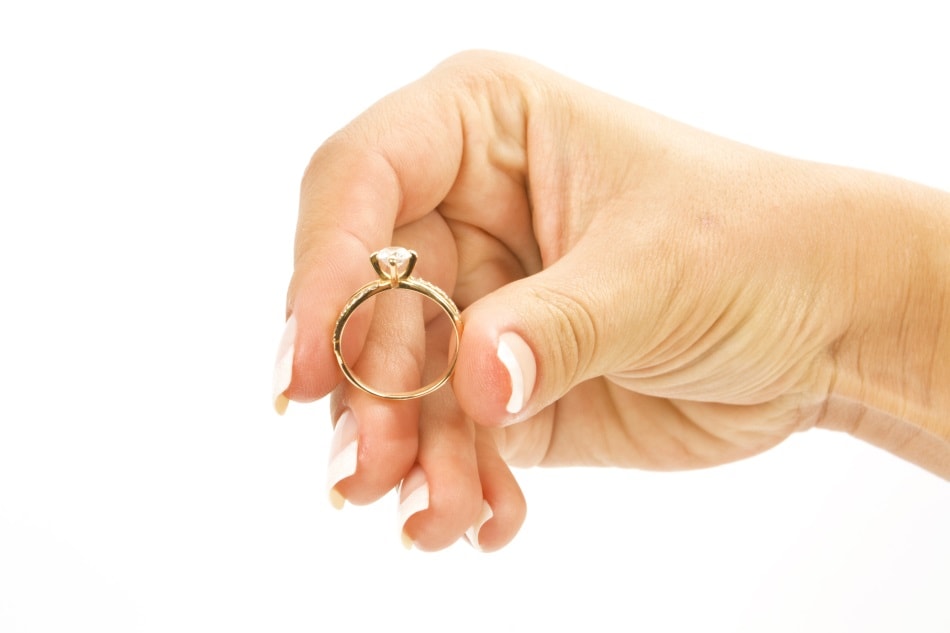
Table of Contents
As Jewelry Shopping Guide editors, we write about things that we love and we think you’ll like too. We often have affiliate partnerships, and may generate some revenue from these links at no cost to you.
High and low profile settings on engagement rings have their pros and cons, and while they may appear rather similar, are quite distinct. Interestingly, people rarely consider which of these settings suit their preference and lifestyle when they choose their engagement ring.
If you aren’t sure what a high or low setting is, we’ve got you covered. Here’s what you need to know about high settings vs low settings on an engagement ring.
What’s a High Setting vs. a Low Setting?
High and low settings are also called high and low profiles, so these terms can be used interchangeably.
When you hold a ring and look at its sideways profile, notice the setting that holds the diamond or gemstone. If that sits low, with the gemstone closer to the band, it’s called a low setting, but if the stone is held up high and protrudes into the air, it’s a high setting.
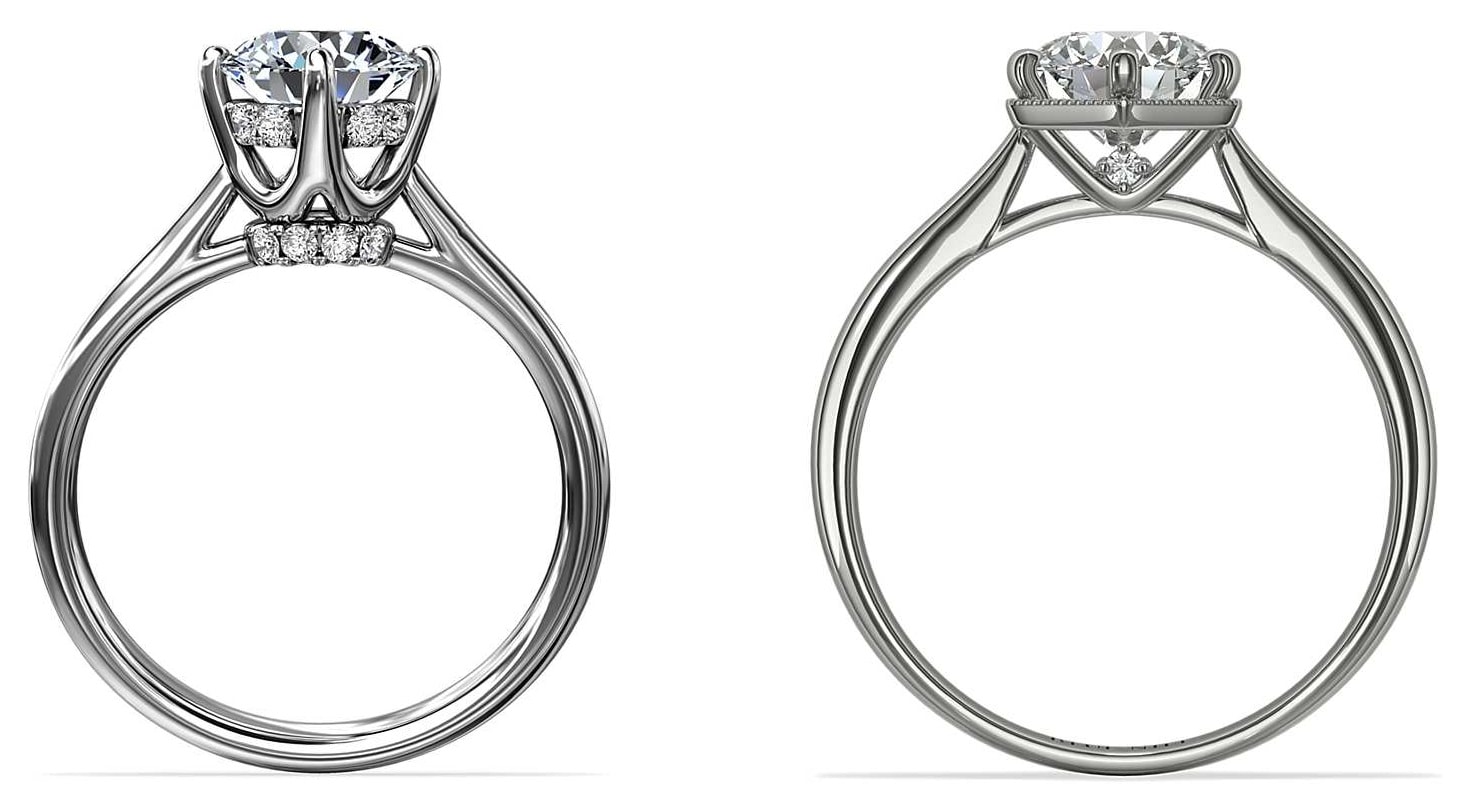
High settings have longer prongs that extend upwards whereas lower profiles have short prongs that hold the stone closer to the finger.
Pros and Cons of High Setting vs. Low Setting
If you’re wondering which of these are better for your engagement ring, here’s a quick rundown of the pros and cons of each:
High Setting Pros:
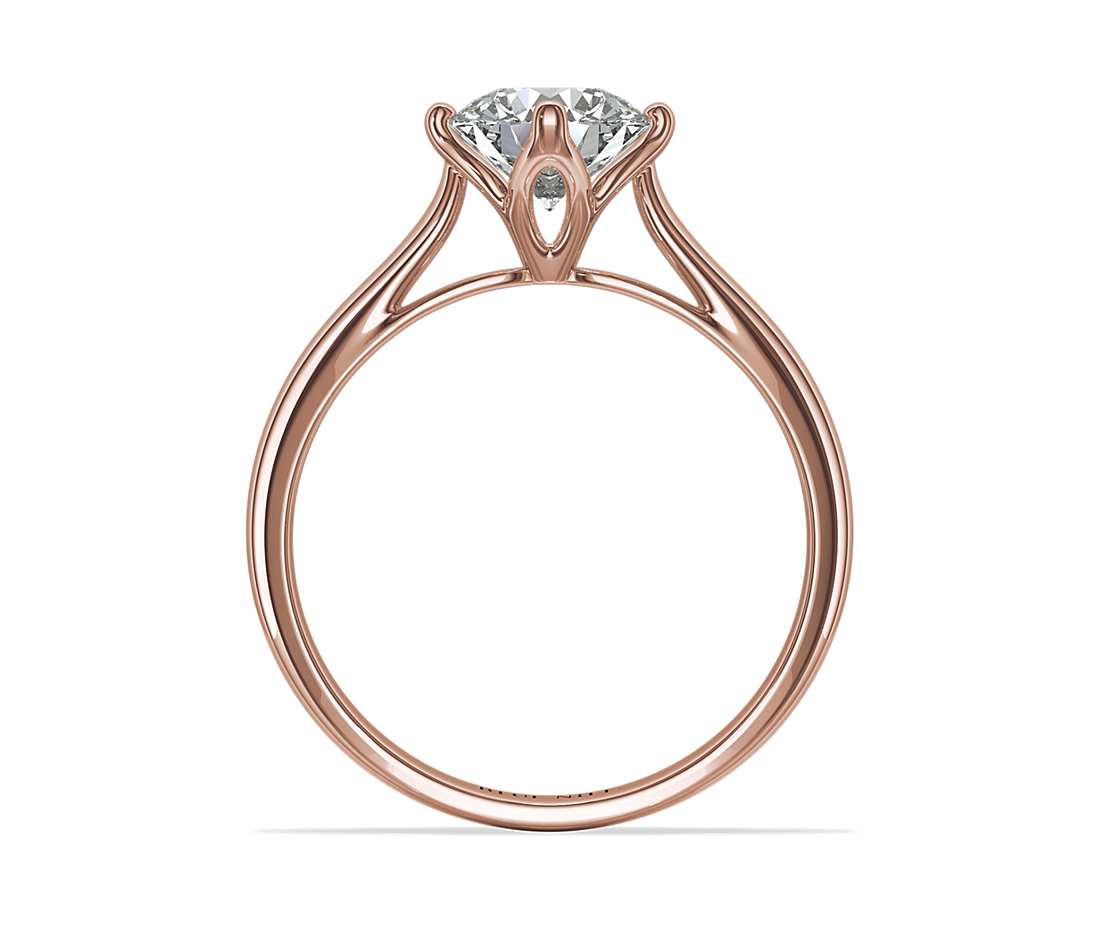
- A high setting holds the diamond or gemstone up high, allowing it to stand out and be seen clearly. This is ideal for larger stones that you’d really want to show off.
- There can be better light performance as the stone is obscured by less metal. The prongs are typically thinner and longer, with more space between them for light to touch the stone.
- They tend to look more elegant and stylish especially when viewed from the side. The style of the setting adds its own beauty to the design, like this tulip inspired setting.
High Setting Cons:
- High settings tend to snag and catch on objects, because of how they protrude. This includes items like clothes, sheets and hair. Not only is this annoying, but it can compromise the integrity of the stone and exposes it to more damage.
Low Setting Pros:
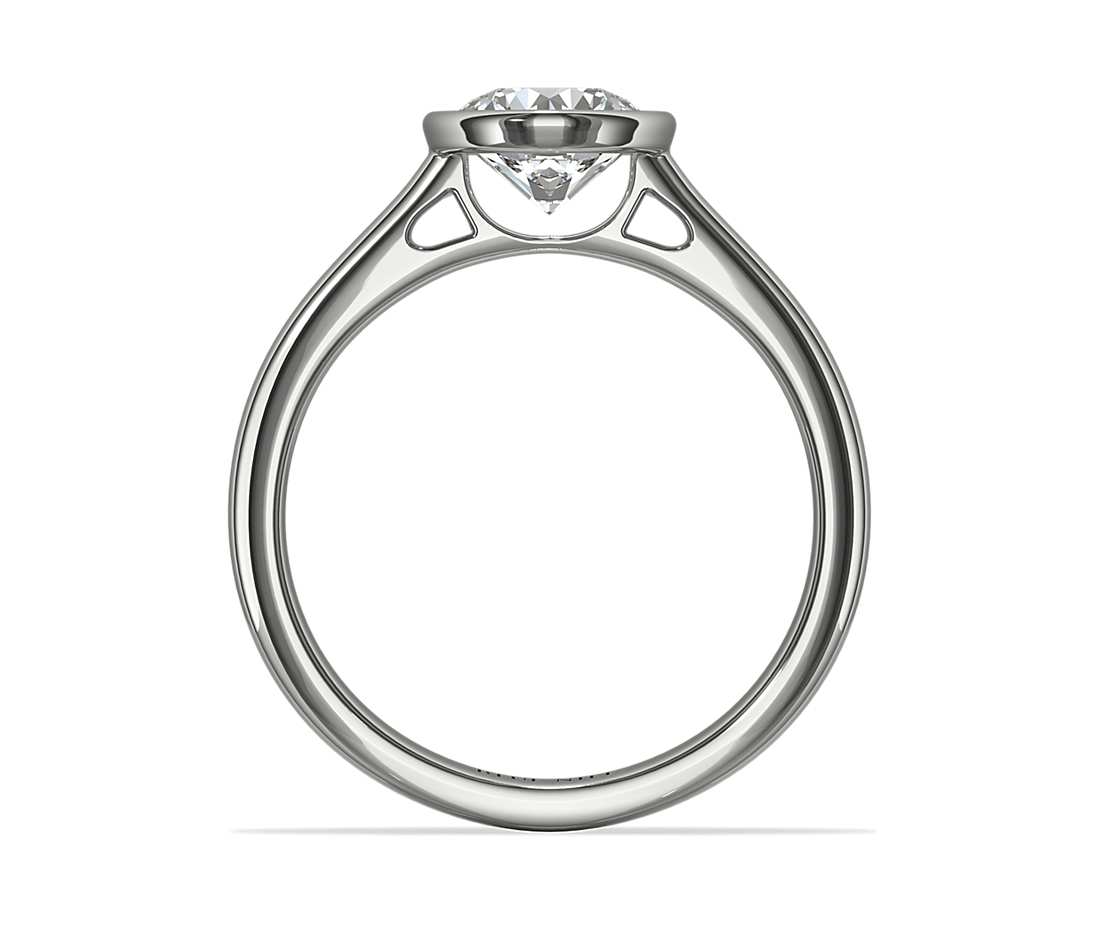
- These don’t catch on objects and are easier to wear especially for those who use their hands a lot for work. If you lead an active lifestyle, engagement rings with low profiles are more comfortable and the stone won’t be as exposed.
- Durability is often better as the stone is better protected and less likely to knock on things.
Low Setting Cons:
- The stone’s brilliance can be subdued and may look smaller. Of course, this depends on the individual setting.
- It can have a dumpy look from the side with the shorter prongs.
From these two settings, the more popular option tends to be the high profile. If you do decide to choose a high profile engagement ring, it’s best to take it off when engaging in physical activity or using your hands for work.
Best High and Low Setting Engagement Ring Designs
From the face up, the extension to which the stone is held can’t easily be seen, so the high and low setting only becomes clearly visible when the ring is viewed from the side. Here are some notable ring designs:
High Engagement Ring Settings
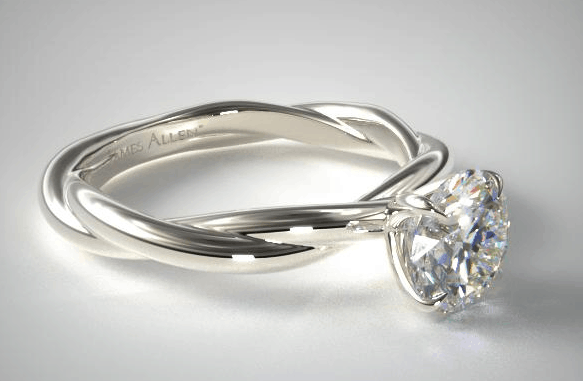
This simple solitaire ring design is a minimalist’s dream and yet it still catches your attention and stands out on your finger. The diamond is held high by four prongs, with maximum light performance allowed. The twisted shank just adds an extra element to the minimalist look.
If you’re after a meaningful engagement ring, then a three stone ring is ideal. It represents the past, present and future, highlighting the journey of the couple. This particular ring design features two sapphires and a diamond held up high in a complex aesthetic setting that’s a joy to behold.
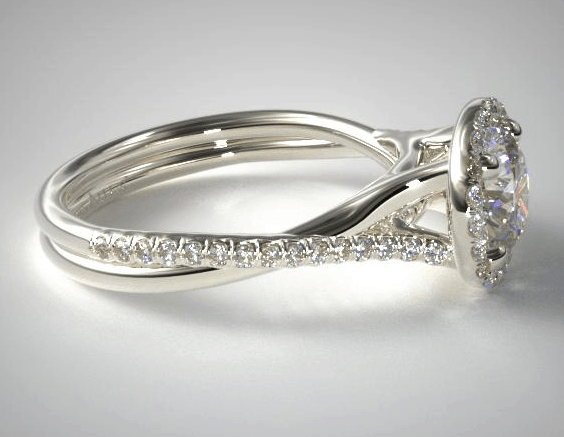
A halo ring setting adds extra sparkle to the center stone and brings the attention to the overall brilliance of the design. When held up high, the ring of the halo adds complexity to the setting while choosing a pave shank to add even more detail to the ring.
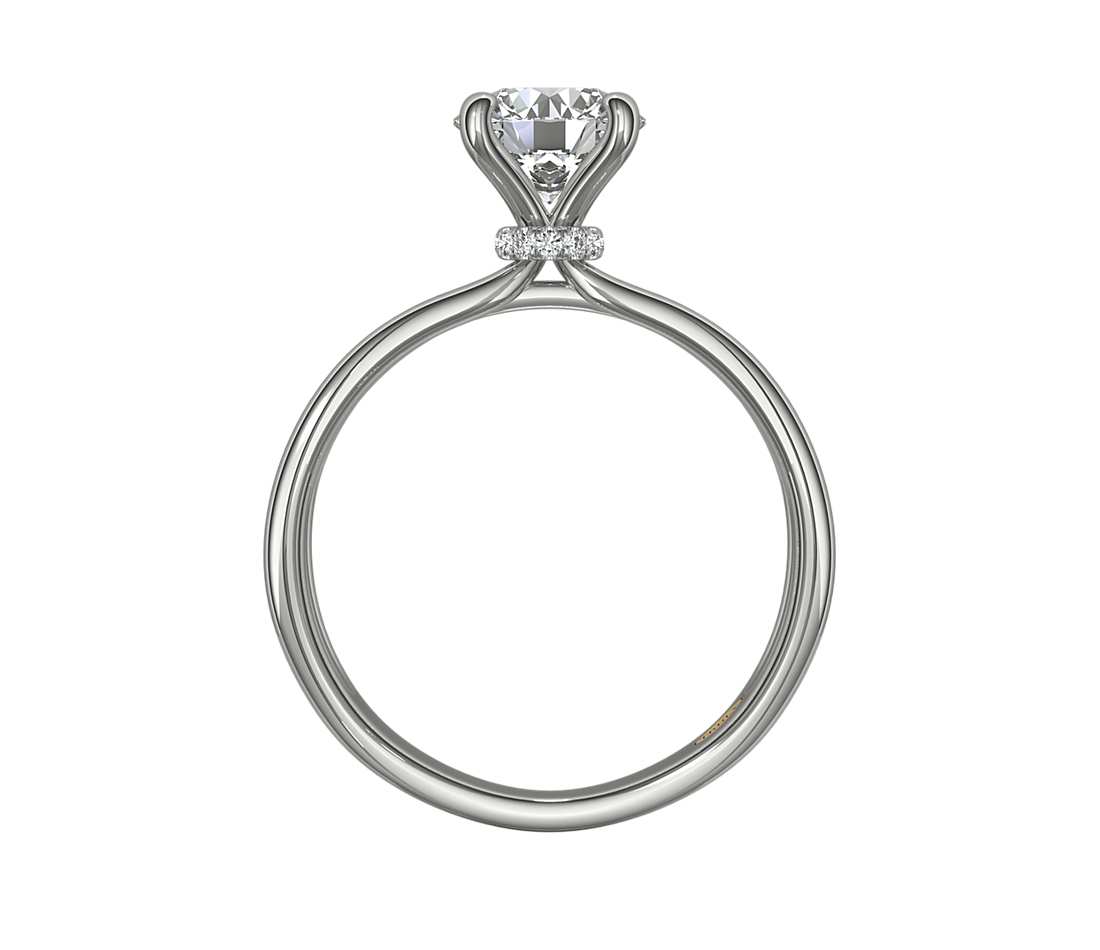
For something truly unique, opt for a designer engagement ring like this Zac Posen triple band solitaire engagement ring. From the side, you only notice the band with the diamond held elegantly up high, in a thin, stylish setting. Rotate the ring and you’ll notice that it’s in fact three bands, held together, representing the past, present and future.
Low Engagement Ring Setting
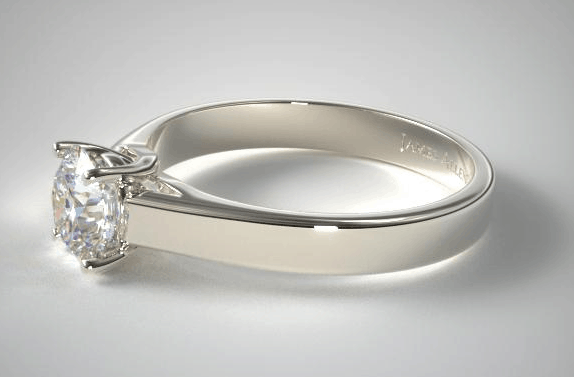
This solitaire ring is ideal for an active lifestyle, as the diamond is held low on the band, keeping it safe from unnecessary impact. The thicker band can also feel more comfortable and reduce ring spinning. The minimalist style keeps the focus on the diamond with the elegant white gold band complementing the center stone.
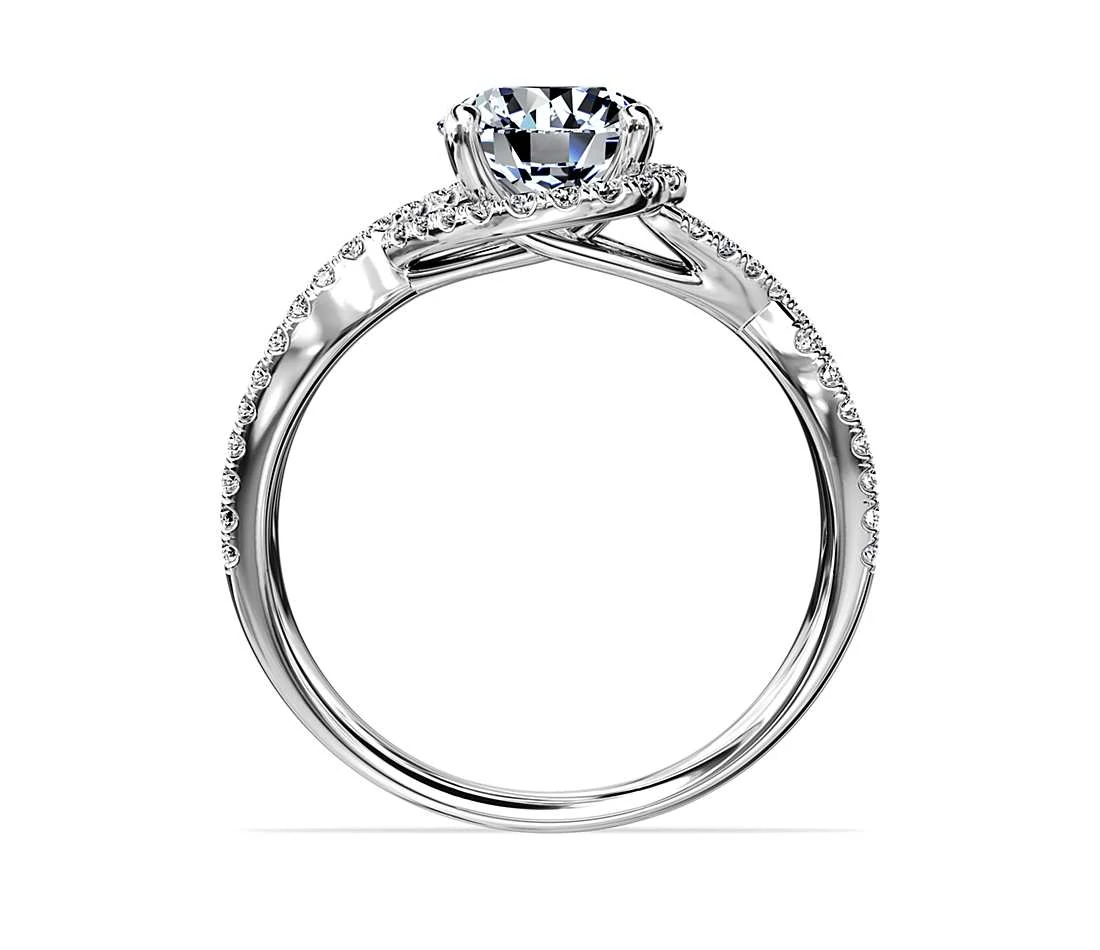
This stylish pave solitaire ring design has a unique setting that holds the diamond in place while adding sparkle and detail to the design. The criss-cross style setting is aesthetically pleasing and very creative.
Wrapping Up
When choosing your engagement ring, don’t forget to view the design in profile and check out the setting carefully. If you’re wondering which of these two options is better, there’s no right or wrong answer. Both high and low settings have their individual benefits, so choose according to your lifestyle and personal preference.









